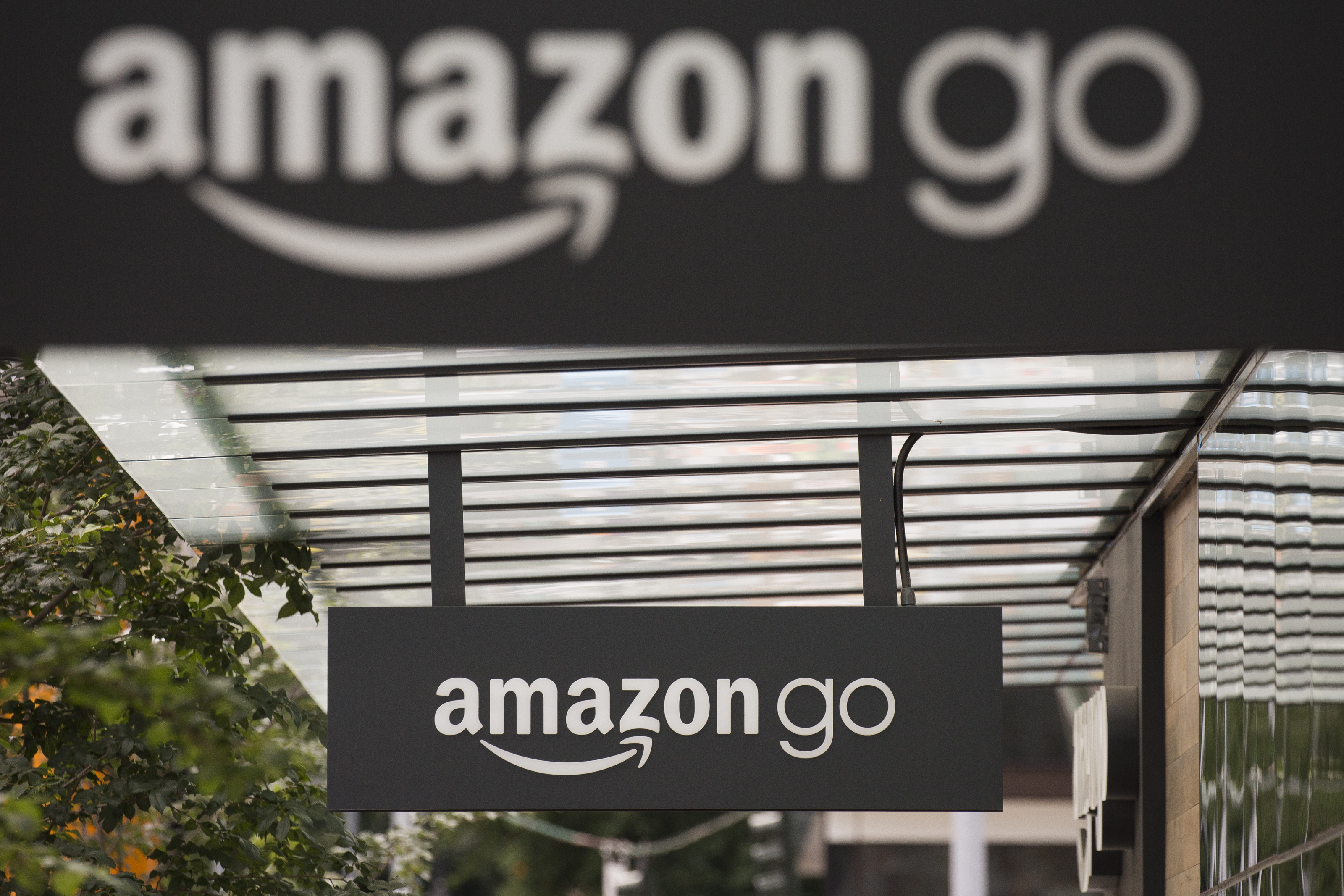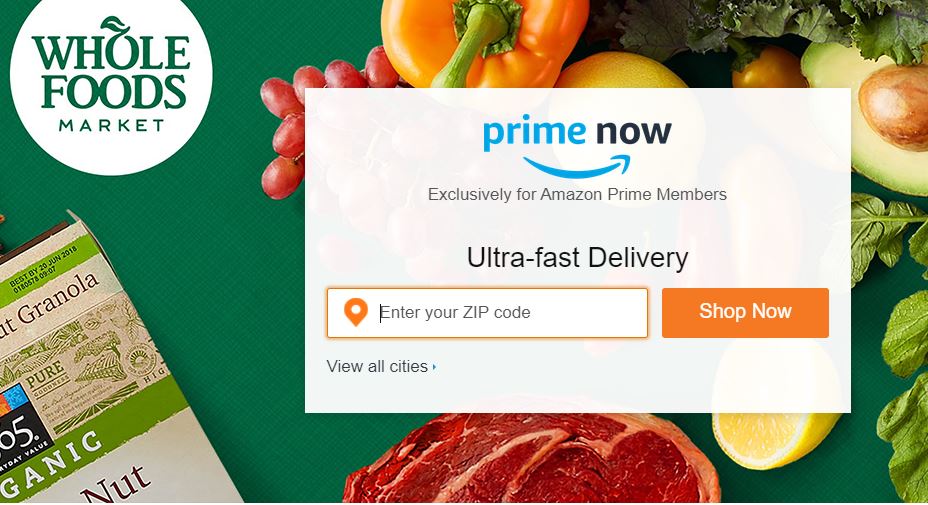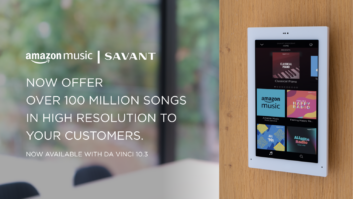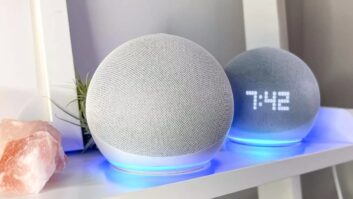
Amazon Leads In R&D Spending
Prime Cut: For many years, and much to the chagrin of investors, Amazon has been more than willing to take a profit hit to fuel the kind of research and development that has led to the advent of Alexa, same-day deliveries, cashless convenience stores, and its AWS Cloud business.
TWICE Take: Apparently the company is maintaining that ethos. According to Recode, Amazon spent more on R&D last year, $76 billion, than any other U.S. company, followed by Alphabet, Intel, Microsoft, Apple and Johnson & Johnson. And the investment benefits more than just Jeff Bezos; total R&D spending accounts for about 3 percent of the GDP, President Trump’s anti-Amazon broadsides aside.

See the full story at Recode.

There’s Something To Be Said For Synergies
Prime Cut: Amazon didn’t wait long to bring its special sauce to Whole Foods. Soon after buying the upscale grocer for nearly $14 billion last summer, the company began selling its proprietary tech there via endcaps, and installed delivery lockers to leverage the supermarkets as pick-up points.
TWICE Take: Now, the company is bringing its awesome logistical prowess to bear, building out its two-hour food delivery program through Prime Now that first launched in February and is presently available in seven cities. The latest Whole Foods locale: Greater Los Angeles and Orange County, spanning the California coastline from Santa Monica to San Clemente, and as far north as Pasadena.

Under the program, Prime members receive free two-hour delivery and, for $8, can get their foodstuffs in 60 minutes or less on orders of $35 or more. Amazon plans to continue the expansion across the U.S. through the balance of the year.
See the full story at Amazon.

Speak Up And Pay Me
Prime Cut: Amazon is reportedly readying the next step in digital payments: pay by voice. The e-tailer is enlisting its virtual assistant Alexa to allow users to transfer funds by voice command, requiring only the bank routing number of the recipient.
TWICE Take: If true, the voice-supported peer-to-peer payment system can put Amazon in the big leagues of the financial and payment sector, alongside long established players like PayPal, Square and Apple. Amazon entered the payment market in 2005 with Amazon Pay, later adding Amazon Cash, Gift Cards, Rewards Visa Cards and, more recently, checking accounts through J.P. Morgan Chase. The ultimate goal: a single digital wallet that would make paying for purchases at Amazon or Whole Foods seamless.
See the full story at Nasdaq.

Amazon Gets Tough With Pay-For-Play Customers
Prime Cut: A rash of customer complaints hit social media last week when shoppers were suddenly, and without explanation, locked out of their Amazon accounts. Turns out the action was not just another Internet outage; Amazon was cracking down on “bad actors” who had violated company rules about accepting gifts, gratuities or freebies from vendors in exchange for favorable reviews.
I am getting SO many different responses.. some say my account is closed… some say on hold.. some say there IS a glitch.. some say I violated terms on a second account that I DON'T HAVE. @amazon #amazonclosed @audible_com @AmazonHelp @FoxNews @FOX5Atlanta @channel1atlanta HELP! pic.twitter.com/RHtMJsbN03
— 🍄Mary🍄 (@MaryHadABigLamb) April 2, 2018
TWICE Take: Amazon first instituted the regulation in 2016, to ensure the integrity of the user reviews that customers and sellers so heavily rely upon for shopping guidance and sales and ranking boosts. But despite the ban on biased reviews, an Amazon subculture of pay for play has arisen on the site, in which some buyers and sellers skirt the rules by sharing discount codes, sending reimbursements through PayPal or creating fake accounts and reviews — which would account for the unsolicited packages that some customers have reported receiving.
See the full story at Business Insider.

The Last Amazon Holdout
Prime Cut: Despite Amazon’s utter domination of the retail landscape, there’s still one swath of the population — and a hyper-critical one at that — that seems immune to the e-tailer’s siren song.
TWICE Take: According to a report by Yes Lifecycle Marketing, Gen Z consumers have yet to be swayed by the convenience and cost-savings of shopping on Amazon. Instead, these teens and twentysomethings choose to frequent other retailers, with 31 percent actually preferring the in-store experience.
Why? Postulates Episerver senior commerce director Ed Kennedy, Gen Z has the time and disposable income to seek unique retail experiences, and demands trend-right brands that are unavailable on Amazon. But perhaps most important, Amazon has failed to engage young customers on social media, where an increasing number are making purchases.
See the full story at Glossy.

Amazon Quote Of The Week
“If they wanted to go after and nurture Gen Z, they need to go where those consumers are, which is on social media … Amazon is not doing any of that.” — Ed Kennedy, senior commerce director of Episerver, on Amazon’s lost generation













